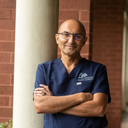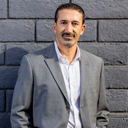I need Septoplasty for medical reasons. I am planning to combine Rhinoplasty with it. One surgeon I consulted said that he uses general anesthesia because he can ensure my breathing continues and the breathing tube ensures that blood from my nose does not get into my lungs.The other surgeon said that he uses IV Sedation (Twilight sedation) because it is sufficient and because recovery is easy. The anesthesia-nurse said an air-mask prevents blood from entering my lungs. Both said that the anesthetic is administered through an IV. So what's different between the two methods? The drug? The dosage?
Answers (22)
From board-certified doctors and trusted medical professionals
Dr. David C. Pearson, MD

Dr. David C. Pearson, MD
Board Certified Facial Plastic Surgeon
Answer
Dr. Steven L. Ringler, MD, FACS

Dr. Steven L. Ringler, MD, FACS
Board Certified Plastic Surgeon
Answer
Dr. Eric M. Joseph, MD

Dr. Eric M. Joseph, MD
Board Certified Facial Plastic Surgeon
Answer
Dr. Tanveer Janjua, MD

Dr. Tanveer Janjua, MD
Board Certified Facial Plastic Surgeon
Answer
Dr. Farbod Esmailian, MD

Dr. Farbod Esmailian, MD
Board Certified Plastic Surgeon
Answer
Dr. Otto Joseph Placik, MD

Dr. Otto Joseph Placik, MD
Board Certified Plastic Surgeon
Answer
Dr. Ricardo L. Rodriguez, MD

Dr. Ricardo L. Rodriguez, MD
Board Certified Plastic Surgeon
Answer
Dr. Ryan Greene, MD, PhD
Dr. Ryan Greene, MD, PhD
Board Certified Facial Plastic Surgeon
Answer
Dr. Jonathan Berman, MD
Dr. Jonathan Berman, MD
Board Certified Plastic Surgeon
Answer
More Rhinoplasty Questions
See all Rhinoplasty Q&AWE SEND PRETTY
EMAILS
What’s trending? Who’s turning heads? Which TikTok myths need busting? We’ve got you. No fluff, no gatekeeping—just real talk. Get our free, unfiltered newsletter.
